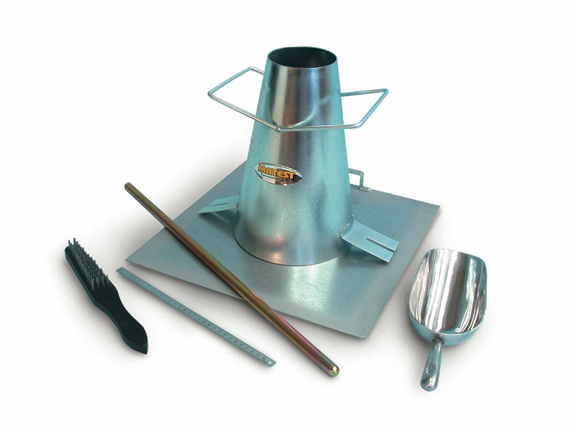SLUMP TEST
- Slump test is the most commonly used test of measuring work ability of concrete.
- It can be employed either in laboratory or at site of work.
- It is used conveniently as a control test and gives an indication of the uniformity of concrete from batch to batch.
- The apparatus for slump test consists of a metallic mould in the form of a frustum of a cone with internal dimension as follow
- Bottom diameter = 20 cm
- Top diameter = 10 cm
- Height = 30 cm
Procedure :-
- The internal surface of the mould is thoroughly cleaned and freed from superfluous moisture and adherence of any old set concrete before commencing the test.
- The mould is placed on a smooth, horizontal and non-absorbent surface.
- The mould is filled with concrete in 4 equal layers. Each layer is tamped with 25 strokes of tamping rod.
- After the top layer has been tamped, the concrete is struck off level with a trowel and tamping rod. Then, the mould is removed by lifting it slowly and carefully in a vertical direction. This allows the concrete to subside. This subsidence is referred as slump of concrete.
slump patterns :-
- True slump
- shear slump
- collapse slump
- True slump : If concrete subsides evenly it is called true slump.
- Shear slump : If one half of the concrete cone slides down, it is called shear slump. The shear slump is measured as a difference in height between the height of the mould and the average value of subsidence.
- Collapse slump : The collapse indicates a leaner mix.


